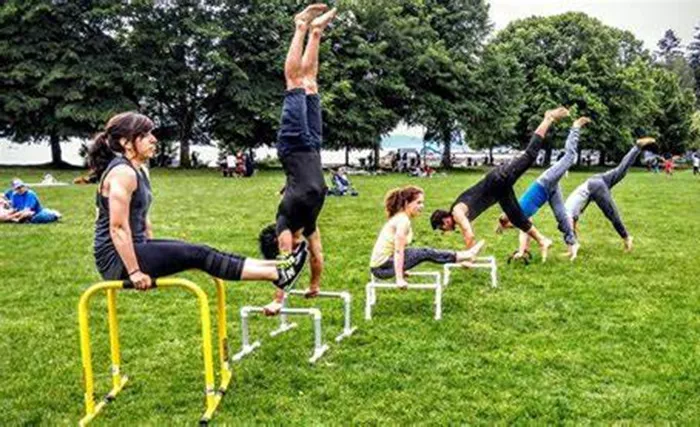In recent months, a surge of interest in body-weight workout routines—reminiscent of exercises popularized decades ago—has taken social media by storm. This trend echoes the cyclical nature of fitness, reminiscent of how fashion styles re-emerge over time. As fitness enthusiasts explore simpler training methods, calisthenics, characterized by exercises like pushups, pullups, squats, and planks, are making a significant comeback.
Kirk Myers, founder of Dogpound and celebrity trainer, notes that the rise of calisthenics aligns with recent changes in the fitness landscape. “Calisthenics are trending upwards, and I think some of that has to do with what’s happened in the last five years,” he explained, referring to the increased reliance on connected fitness and smart home gyms during the pandemic. The industry appears to be pivoting back to more fundamental workout techniques.
Danielle Coleman, director of training at Pvolve, agrees, stating, “In this age of access, people are looking for quick and convenient, and calisthenics training provides that.” As individuals seek to simplify their fitness routines, calisthenics offers an accessible solution.
Flexibility and Accessibility: The Calisthenics Advantage
One of the primary benefits of calisthenics is the ability to perform exercises anywhere, eliminating barriers such as gym commutes or memberships. John Mercer, PhD, professor of kinesiology at the University of Nevada, Las Vegas, emphasizes this aspect: “Incorporating exercise into daily life is essential for sustainability. Calisthenics allow for long-term gains instead of short-term results that may diminish due to various barriers.”
Myers highlights the practicality of calisthenics for his high-profile clients, including Jacob Elordi, Tom Holland, and Taylor Swift. “Calisthenics can be performed whether you’re traveling, at home, or outdoors,” he said. This flexibility makes it easier for individuals with busy schedules to stay active.
Moreover, exercising outdoors can enhance the overall experience. Mercer cites research showing that outdoor workouts can reduce perceived exertion, lower stress levels, improve mood, and boost self-esteem.
Progressive Training Without Equipment
In traditional gym settings, progression often relies on increasing weights. However, calisthenics challenge individuals to explore creativity in their workouts. Coleman suggests varying tempos to enhance strength. “For a pushup, try taking 3–4 seconds to lower your body,” she recommended, adding that explosive variations like clap pushups can also stimulate muscle fibers.
Additionally, varying the form of exercises keeps routines engaging. Keoni Hudoba, legacy trainer at Barry’s Bootcamp, encourages experimenting with different pushup variations, such as diamond-grip or plyometric pushups, to prevent adaptation. Coleman further suggests modifications like performing pushups on one leg or from the knees to adjust difficulty.
Research indicates that muscle growth is more dependent on approaching failure than on lifting heavy weights. This principle holds true for bodyweight exercises as well.
Enhancing Overall Fitness
Calisthenics not only serve as a standalone workout but also complement other training styles. Coleman emphasizes the functional nature of calisthenics, noting that they engage multiple muscle groups simultaneously. “Calisthenics help build stability, mobility, and strength,” she stated.
Additionally, the continuous engagement of the core during calisthenics translates well to other physical activities. Hudoba shares his personal experience, noting that his core strength from calisthenics has significantly improved his running performance. “Now it’s something I look forward to,” he said, reflecting on his enhanced strength.
Calisthenics can also function as cross-training for endurance athletes. Mercer explains that many endurance competitors incorporate calisthenics into their training regimens for events like marathons and Ironman races. “It’s easy to add calisthenics in a way that enhances your other training, whether it’s endurance or strength,” he concluded.
As the popularity of old-school calisthenics rises, individuals are reminded of the timeless benefits of bodyweight exercises—accessible, effective, and adaptable for all fitness levels.
Related Topics
Anaerobic Exercise VS. Aerobic Exercise: What’s The Difference?
































